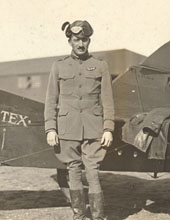Laurence S. Kuter War Planner & MAJCOM Commander
Kuter was a brilliant planner and leader. As a major in August 1941, he was one of four principal authors of the plan that guided the use of air power in World War II. Later that year he became the youngest brigadier general in the Army. His career included command of Military Air Transport Service, Pacific Air Forces, Air University, and North American Air Defense Command.
This massive collection of more than 25,000 pages consists of 48 boxes of manuscript material and 51 bound scrapbooks, an addendum with 15 boxes of manuscript material and 45 books, and a second addendum with seven boxes of manuscript material. It includes correspondence, books, speeches, conferences, orders, biography, recordings, scrapbooks, portraits, guest books, diaries, photographs, periodical, passports, and a wide variety of documents.











